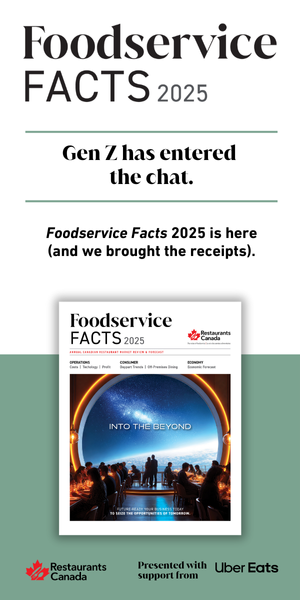Staying Steady in the Storm: Agile Leadership Lessons for (and from) Hospitality
If there’s one constant in hospitality, it’s change. Shifting guest expectations, unpredictable supply chains, rising costs, staffing shortages—we’re an industry built on our ability to pivot. And yet, even with this resilience, the past few years (and now these past few months) have stretched us further than we thought possible.
As an HR leader, I’ve seen the toll prolonged uncertainty takes—not just on teams, but on those leading them. But I also believe hospitality professionals are uniquely equipped to navigate these moments. Why? Because adaptability is part of who we are.
Long before “agility” became a corporate buzzword, it was how we survived a slammed Saturday night with two servers down and a line out the door. It’s how we turned last-minute menu changes into seamless service and guest complaints into five-star reviews.
We’re wired to make the unpredictable feel effortless.
But what happens when the unpredictability never lets up? When uncertainty becomes the norm instead of the exception? That’s when agile leadership becomes less about managing change and more about building cultures that thrive through it. Here’s what I’ve learned about staying grounded while guiding others through the storm.

1. Communicate early, honestly and often.
When business—or the world around us—feels uncertain, silence can be a breeding ground for anxiety. And yet, as leaders, we sometimes hold back, waiting until we have the full picture or the perfect plan. But in the absence of information, people fill the gaps themselves—and rarely with good news.
Your team doesn’t expect you to have all the answers. What they need is transparency, consistency and a sense that they’re part of the process. Even saying, “Here’s what we know today, and here’s what we’re watching,” can build trust.
Regular touchpoints—quick huddles, candid check-ins, open-door conversations—help people feel informed and included. People commit to what they help create, and agile leadership is less about having the full plan and more about building the kind of team that’s ready to create one together.
2. Empower flexibility and growth
Rigid systems crack under pressure—and so do people. If the last few years have taught us anything, it’s that survival depends on our ability to bend, adapt and move with what’s happening around us.
That starts with creating agile teams and meeting people where they are. Flexible scheduling, cross-training, and adjusting policies to reflect real life aren’t just nice-to-haves anymore—they’re essential. Some employees are balancing childcare. Others are caring for family, picking up extra work, or navigating burnout. When we show our teams that we see them as whole people, not just roles on a schedule, we keep them engaged, loyal and ready to go the distance.
Agility is also about creating real growth opportunities within the business. Too often, outdated hierarchies and roles hold people and potential back. When we rethink those structures and allow them to breathe by creating new roles and job titles, launching mentorship programs and inviting fresh voices into the conversation, we give our people clearer reasons to stay and pathways to thrive. These changes and recognition have to be visible. Don’t let your top performers quietly carry the load behind the scenes. Celebrate them. Introduce them to guests, highlight them on social media, and make sure their talent and glow are part of your story.
3. Create moments of connection and care.
We spend our days creating memorable experiences for our guests—anticipating needs, adding thoughtful touches, making people feel like they belong. But how often do we turn that same level of care inward? Especially when the pace is relentless and the pressure is high, our teams need to feel that same spirit of hospitality from us.
It doesn’t take a big budget to make a big impact. Small, intentional gestures—a handwritten thank you, a public shout-out, a shared meal to mark the end of a busy week—go further than we sometimes realize. These micro-moments stack up, creating a workplace culture where people feel seen, appreciated, and connected, even on the toughest days. And, when people feel cared for, it becomes a place they’re proud to be part of—where they feel purpose and belonging. And in an industry built on human connection, that’s not just nice to have—it’s the key to keeping great people around.
4. Don’t forget yourself.
This is the hardest one. In hospitality, we’re wired to serve—our guests, our teams, our business. But you can’t lead well if you’re running on empty.
Sustainable leadership requires boundaries. Block time to recharge. Delegate, even when it’s uncomfortable. Ask for help when you need it. The most effective leaders I know are the ones who model what balance looks like. When you give yourself permission to pause, you create space for others to do the same—and that’s how you build lasting strength into your culture.
5. Stay grounded in purpose.
When everything feels like it’s shifting under your feet, purpose is what holds you steady. Hospitality has always been about more than food and service. We create spaces where people connect. We help mark milestones. We provide comfort, joy, and belonging. That work matters—especially now. When morale dips, remind your team why they do what they do. Share guest feedback. Celebrate team wins. Reflect on the impact you’re making together. Purpose won’t eliminate uncertainty, but it will keep you grounded in what’s real and worth showing up for.
Recognition is retention. Purpose is performance. Agility is culture. If we can reimagine old systems, centre our people, and create workplaces where everyone—leaders included—can thrive through the unknown, we can weather uncertain times.
And, if anyone’s built to handle the unexpected with grace, it’s us.









